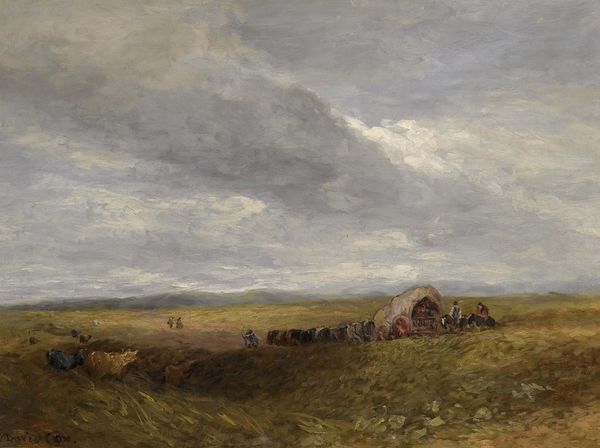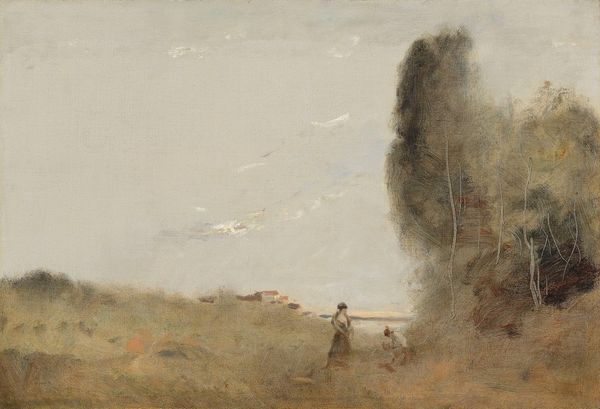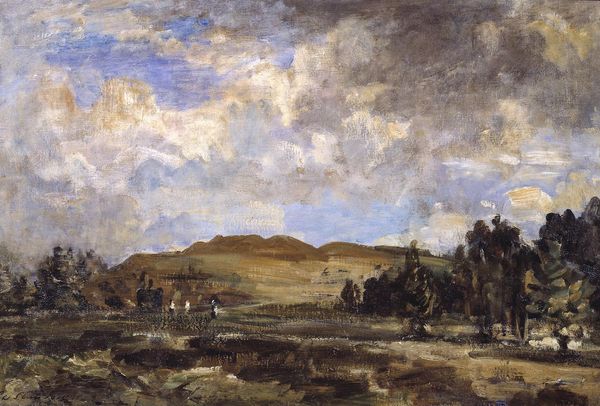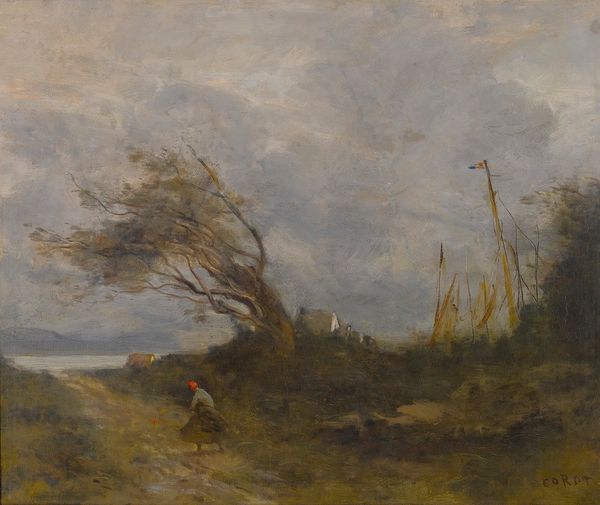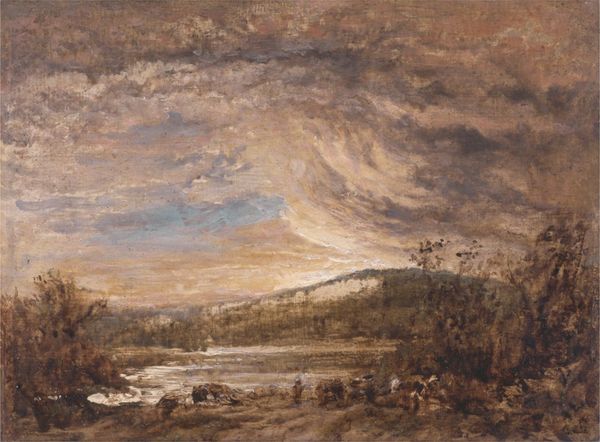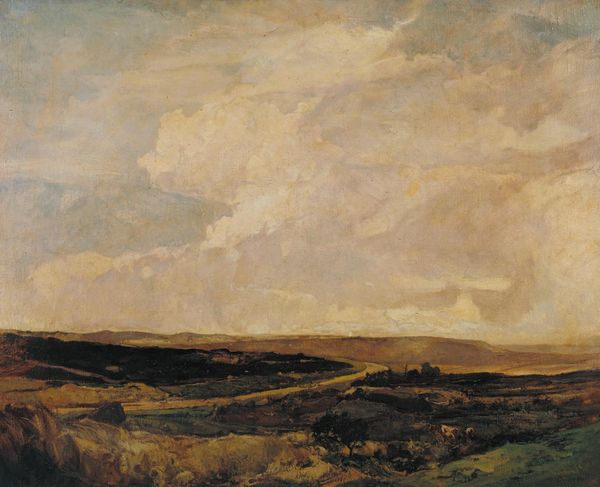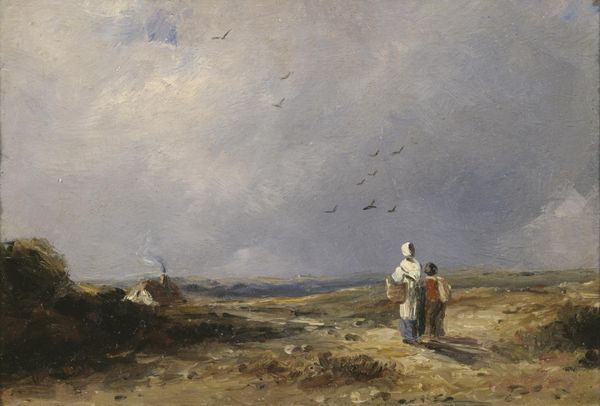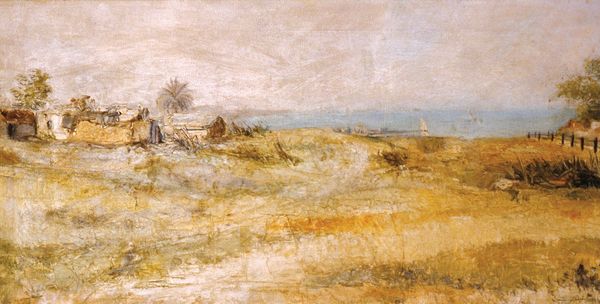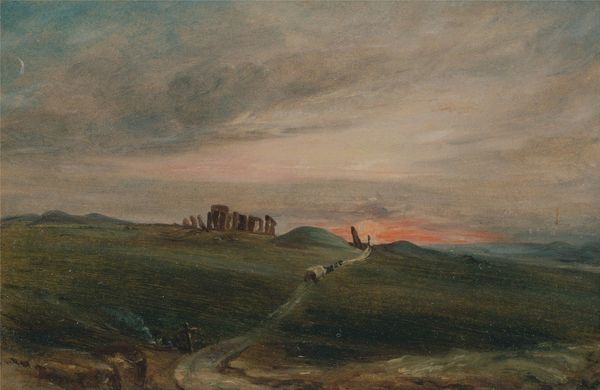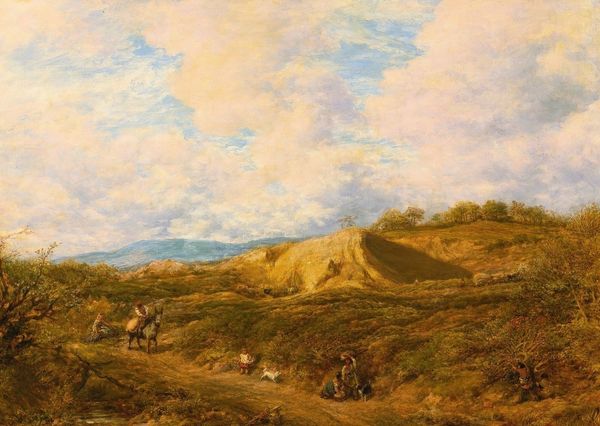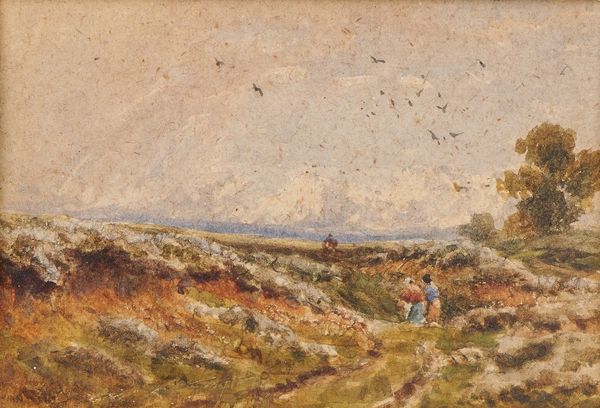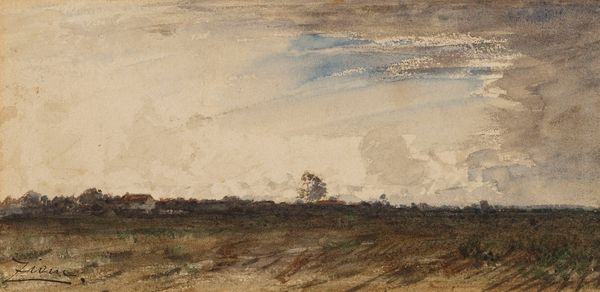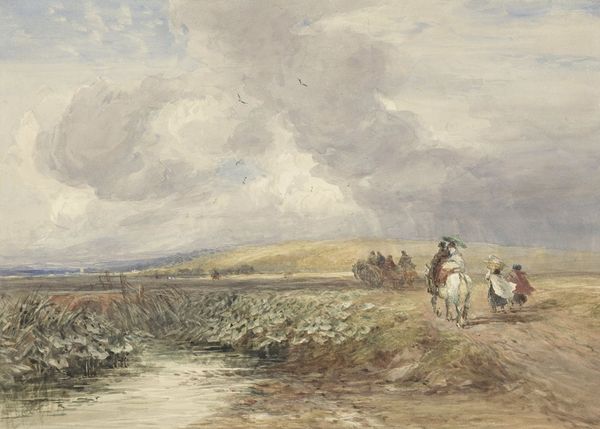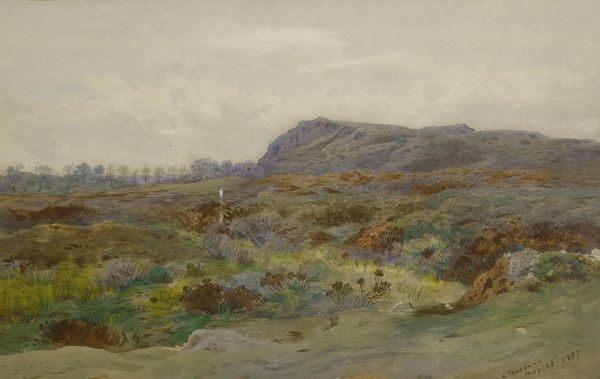
painting, watercolor
#
painting
#
landscape
#
oil painting
#
watercolor
#
romanticism
#
watercolor
Copyright: Public Domain: Artvee
Editor: So, this is "Dartmoor: The Source of the Tamar and the Torridge" by J.M.W. Turner, created around 1813. It's an oil and watercolor painting, and honestly, it strikes me as a landscape wrestling with itself – a mix of serenity and something... harsher. What do you see in this piece? Curator: I see a complex commentary on land use and power during the early 19th century. Turner's Romantic landscapes weren't just pretty pictures. Dartmoor, particularly, represents a contested space. Notice the figures: some tending to animals at the watering hole, others seemingly burning vegetation on the hillside. How does this juxtaposition strike you? Editor: Well, it does seem to show the diverse activities happening simultaneously in the same location, some more harmonious than others. Burning vegetation could imply land clearing for agriculture, a kind of intrusion? Curator: Exactly. And who benefits from that intrusion? Think about the Enclosure Acts, the Highland Clearances... landscapes were never neutral territory. Turner subtly hints at the displacement and transformation inherent in "improvement." Even the light seems to emphasize the tension between idealized nature and the labor imposed upon it. Editor: So, it's less a celebration of the natural world and more of a critical look at our relationship with it, or maybe how we were changing it at that time? Curator: Precisely. Turner pushes us to consider whose story is being told and whose is being erased from the landscape. Even a seemingly simple watercolor can become a powerful document of social and economic change. Editor: That’s a perspective I hadn’t considered before. I'll definitely look at landscapes differently now! Curator: Landscapes, like all art, are mirrors reflecting our societal values, conflicts, and histories.
Comments
No comments
Be the first to comment and join the conversation on the ultimate creative platform.
